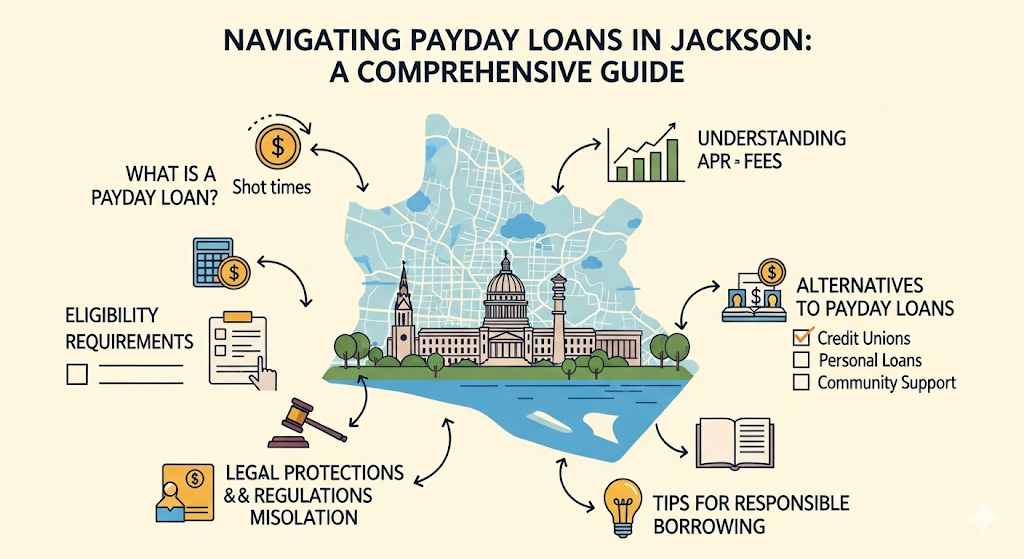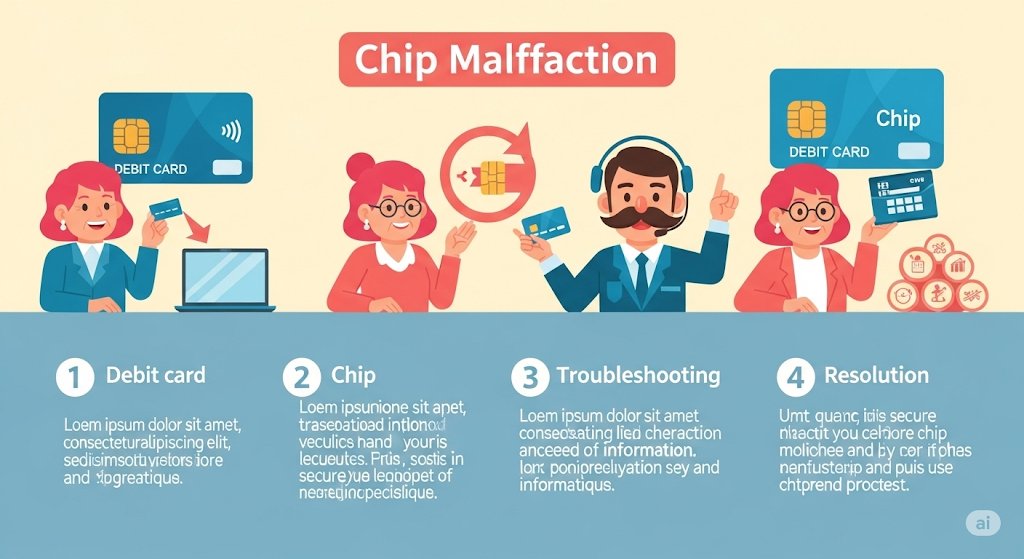
chip malfunction on debit card can cause inconvenience during everyday transactions, especially when the card fails to communicate with payment terminals. This issue often results from physical damage, dirt, or gradual wear on the chip, preventing secure data exchange. Cleaning the chip gently or requesting a replacement card are common solutions to restore functionality quickly.
The chip on a debit card uses advanced technology to encrypt transaction data, making it more secure than traditional magnetic stripes. However, despite this sophistication, environmental factors like dust, moisture, or physical abrasion can interfere with the chip’s operation. Understanding these common causes helps users take simple steps to avoid or fix chip-related problems.
When a chip stops working suddenly, it is usually due to a combination of small damages rather than an abrupt failure. Users are advised to inspect the card carefully and clean it with appropriate materials before contacting their bank for support. Knowing what triggers chip malfunctions empowers cardholders to maintain smooth, secure payment experiences.
Understanding Chip Malfunctions on Debit Cards
Chip malfunctions can occur due to physical damage, dirt buildup, or technical issues with the embedded microchip. This chip stores transaction data securely and interacts with payment terminals to authorize purchases quickly and safely. Understanding its operation and symptoms of failure helps users address problems effectively.
What Is a Debit Card Chip
A debit card chip, also known as an EMV chip, is a small, embedded microprocessor on the card’s front. Unlike magnetic stripes, it uses encrypted data processing to reduce fraud risks during transactions.
The chip stores sensitive payment and personal information electronically. When inserted into a chip-enabled terminal, it generates unique transaction codes that protect against counterfeit use.
US debit cards and Visa debit cards both typically contain these chips, though their underlying payment networks might differ. Electronic debit cards, such as some Shazam debit cards, also use chip technology for secure point-of-sale payments.
Common Signs of Chip Malfunction
A malfunctioning chip often causes transaction refusals at chip-enabled terminals. Users might see error messages like “Chip Read Error” or “Insert Card Again.”
Other signs include the chip failing to register during multiple tries or the machine asking to swipe the card instead — but some banks block swipe payments if the chip is damaged to prevent fraud.
Physical issues like scratches, dirt, or wear can disrupt chip performance. Users should also be aware that repeated malfunctions can indicate internal damage needing card replacement.
How the Chip Technology Works
Chip technology operates by creating a unique cryptographic code for each transaction. This process authenticates the card and prevents unauthorized use.
Unlike the magnetic stripe, chips don’t rely on static data, making them more secure. The card reader communicates with the chip to verify the transaction in real time.
If the chip is dirty or damaged, the card reader cannot properly access this encrypted data, leading to transaction failure. Proper maintenance and prompt card replacement minimize disruption during payments.
Causes of Chip Malfunction
Chip malfunctions on debit cards result from several specific issues related to the card’s physical state, electronic environment, and manufacturing quality. Understanding these causes helps identify why a card may fail during transactions and how to address the problem effectively.
Physical Damage to the Chip
Physical damage is the most common cause of chip malfunction on debit cards. The chip can be scratched or worn by contact with keys, coins, or other hard objects in a wallet or purse. Bending the card or dropping it can also cause internal damage that is not visible but affects chip function.
Repeated rubbing or scraping may disrupt the chip’s circuitry, causing it to become unreadable by payment terminals. Cleaning the chip with alcohol or a soft cloth can sometimes help if dirt is the issue, but physical cracks or breaks usually require a card replacement.
Magnetic and Electronic Interference
Though chip technology is more secure than magnetic stripes, interference can still cause malfunctions. Exposure to strong magnetic fields or electronic noise can disrupt the chip’s ability to communicate with card readers.
Devices like smartphones, magnets, or even defective card readers can prevent a stable connection. Another cause involves software glitches within the chip’s internal programming, though these are rare. Using the card in different terminals can help determine if the problem relates to the chip or an external interference.
Manufacturing Defects
Sometimes, chip malfunctions arise from flaws during the manufacturing process. Imperfect embedding of the chip or weak soldering connections can cause intermittent failures or complete malfunction.
These defects may not appear immediately but develop as the card undergoes regular use, especially under stress from bending or exposure to heat. In such cases, banks typically issue replacements when the card is reported faulty without physical damage.
| Key Causes | Examples |
|---|---|
| Physical Damage | Scratches, cracks, bending, dropping |
| Magnetic/Electronic | Magnetic fields, faulty card readers, software bugs |
| Manufacturing Defects | Poor chip embedding, weak internal connections |
Immediate Steps to Take When Your Debit Card Chip Fails
When a debit card chip malfunctions, it disrupts the usual payment process, requiring quick alternatives and communication to avoid transaction delays. The cardholder should explore different payment options, notify their bank, and handle the defective card correctly.
Attempt Alternative Payment Methods
If the chip on a debit card fails, the first step is to try other payment methods to complete the purchase. If available, contactless tap payments can be used, as the magnetic stripe or chip is bypassed.
In some cases, manually entering the debit card number for online or phone transactions can work. However, when paying in-store, inserting the chip is often necessary, and tapping may not be accepted everywhere.
If neither chip nor tap works, using a PIN with the magnetic stripe is possible but could trigger security alerts or be declined. It’s important to avoid repeatedly bypassing the PIN as it may flag the card for suspicious activity.
Contact Your Bank
After a chip malfunction, contacting the issuing bank is critical. The bank can provide information about card status, flags on the account, or recent activity that might affect transactions.
The cardholder should report the chip issue and request a card replacement if the problem persists. Banks often send a new card with an updated chip within a few business days.
It is also essential to confirm whether recent failed transactions affected the account balance or hold funds. This helps prevent interruptions in other payments during the resolution process.
Properly Dispose of a Defective Card
Once a replacement card arrives, the old card with a malfunctioning chip must be destroyed securely. Cutting through the chip area and magnetic stripe ensures the card cannot be used fraudulently.
Discarding the card safely protects personal financial data. Some banks offer card shredding services or instructions on proper disposal.
Keeping the defective card after reporting it may pose security risks, so prompt disposal is advised once the new card is activated.
Replacing a Debit Card With a Malfunctioning Chip
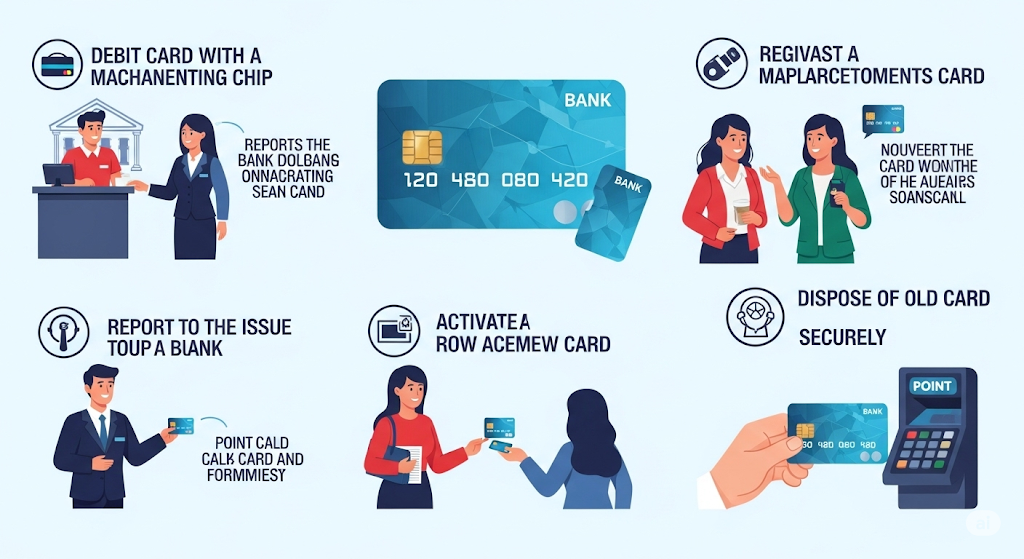
If a debit card’s chip stops working, the cardholder must request a replacement through their bank to regain secure card use. The process usually involves contacting the bank, understanding the timeline for receiving the new card, and activating it properly before use.
How to Request a New Debit Card
To replace a debit card with a chip malfunction, the cardholder should first contact their bank’s customer service. For customers using the Bank of Bhutan International Debit Card, this can often be done via phone, online banking, or visiting a branch.
When requesting a new card, the customer may need to provide identification and verify account details. It is important to specify that the card chip is malfunctioning to expedite the replacement process. The bank may deactivate the old card immediately to prevent fraud.
Some banks allow cardholders to track the replacement request online or through mobile apps. Confirming the request ensures the card will be sent to the correct address.
Expected Replacement Timeframes
Replacement cards are typically mailed within 5 to 10 business days, depending on the bank’s policies and the cardholder’s location. For international debit cards like the Bank of Bhutan International Debit Card, delivery might take longer due to cross-border shipping.
Some banks offer expedited shipping for an additional fee if faster delivery is needed. It is advisable to inquire about this option when making the replacement request.
During the waiting period, the cardholder should have alternative payment methods since the malfunctioning card will likely be deactivated after the request.
Verifying Card Activation
Once the replacement debit card arrives, activation is usually required before use. The bank will provide step-by-step instructions, often involving a phone call, ATM use, or online banking login.
Verifying chip functionality is important after activation. The cardholder should test the chip at a payment terminal to ensure the malfunction is resolved.
If any activation steps fail, contacting the bank promptly will avoid further delays. Proper activation protects the cardholder from unauthorized use and confirms that the new card is ready for transactions.
Protecting Your Debit Card Chip From Future Malfunctions
Maintaining the functionality of a debit card chip requires consistent care and attention to how the card is handled, stored, and protected from common hazards. Taking specific steps minimizes damage risks and prolongs the card’s usability.
Proper Storage and Handling
Storing a debit card properly is essential to prevent chip damage. The card should be kept in a secure place like a wallet or a cardholder, avoiding tight spaces where it can bend or become deformed. Physical pressure or bending can crack the chip or damage its internal circuits.
Users should avoid rubbing the chip against hard surfaces or letting it come in contact with abrasive materials. Regularly inspecting the card for visible wear or dirt also helps detect early signs of malfunction.
Handling the card with clean hands prevents oils or dirt from accumulating on the chip surface. When inserting the card into machines, it should be done gently and aligned properly to avoid unnecessary stress on the chip.
Using Protective Card Sleeves
Protective sleeves made from materials that block physical damage and electromagnetic interference offer an effective shield for debit cards. These sleeves prevent scratches, dust, and minor impacts from harming the chip.
Some card sleeves provide RFID-blocking capabilities, enhancing security by preventing unauthorized scanning of card data. While debit cards do not rely on magnetic stripes for chip functionality, these sleeves boost account security by reducing the risk of electronic theft.
Using sleeves is especially useful for those who carry multiple cards together, as it prevents chips from rubbing against each other. Choosing a snug but flexible sleeve maintains ease of use without compromising protection.
Avoiding Common Hazards
Exposure to magnets, extreme temperatures, and moisture are frequent causes of chip malfunction. Unlike magnetic stripes, chip technology is generally resistant to magnets but prolonged exposure can still affect the card’s components.
Avoid placing the card near strong magnetic sources such as speakers, phones, or magnetic clasps. Temperatures above 120°F (49°C) can damage the chip’s structure; therefore, cards should not be left in hot environments like cars in sun exposure.
Moisture can corrode chip contacts, so cards should be kept dry and away from water. Using plastic bags or waterproof sleeves can help protect the card in wet conditions.
These careful precautions help preserve the security and efficiency of the debit card, supporting smooth transactions and protecting the user’s financial accounts from disruption.
Payment Issues and Security Concerns With Malfunctioning Chips
Malfunctioning debit card chips can cause various payment interruptions and raise security concerns. These problems often lead to declined transactions, increased fraud risks, and force cardholders to consider alternative payment methods.
Declined Transactions and Payment Errors
When a chip on a debit card malfunctions, it may cause transactions to be soft declined or hard declined. A soft decline occurs when the payment terminal temporarily rejects the chip but accepts a fallback, such as swiping the magnetic stripe. A hard decline means the transaction is denied outright due to suspected chip failure or security flags.
Payment errors may include the terminal displaying “CHIP MALFUNCTION” or failing to read the card multiple times. This can happen even if the chip appears physically intact. Frequent declines often force users to switch to cash or request replacements.
Merchants may also face difficulties distinguishing between chip issues and actual authorization problems, which can slow checkout and frustrate customers. Regular cleaning of chip readers helps minimize false declines linked to terminal issues.
Fraud Risks With Faulty Chips
A damaged or faulty chip can compromise the security features that EMV technology provides. The chip generates a unique transaction code for each use, preventing duplication. If this function fails, the card may revert to the magnetic stripe, which is more vulnerable to skimming and cloning.
Cardholders might notice unauthorized charges if their magnetic stripe data is exposed. Cases where someone uses a debit card without physically possessing it often involve stolen magnetic data or online fraud rather than chip failure alone.
To reduce fraud risk, users should monitor transactions closely and report suspicious activity immediately. Banks usually recommend requesting a replacement card if chip malfunctions persist, ensuring the latest security controls are in place.
Options for Contactless and PINless Payments
Contactless (tap) payments and PINless transactions offer alternatives when chip errors occur. These methods rely on near-field communication (NFC) technology and can bypass the need for inserting the card into a reader.
PINless debit cards allow small transactions without requiring a PIN, speeding up payment at times while maintaining security within preset limits. However, limits on transaction size and merchant acceptance vary and may not work everywhere.
Using mobile wallets or digital cards linked to a bank account can also help avoid chip issues altogether. These options often include strong encryption and tokenization, enhancing security compared to physical card use.
Alternative Ways to Pay If Your Debit Card Chip Doesn’t Work
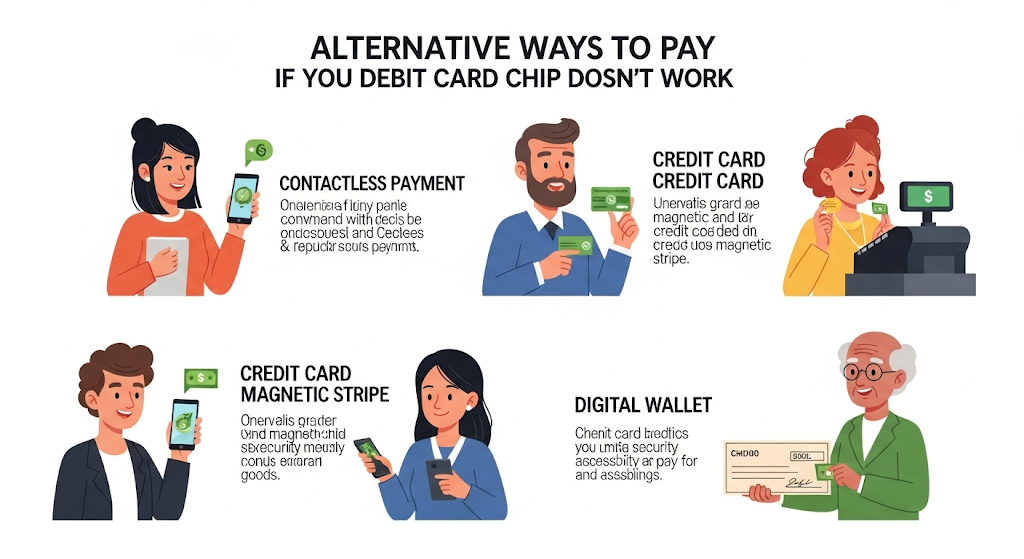
When a debit card chip fails, there are practical payment methods to continue transactions. These include digital wallets, using other card features, or accessing emergency cash. Each option offers specific benefits depending on the situation and card type.
Using Mobile Wallets and Digital Payments
Mobile wallets like Apple Pay, Google Pay, and Samsung Pay securely store card details and allow payments without physical use of the chip. These platforms use tokenization, reducing fraud risk and making them reliable alternatives.
Users with chip issues can link their debit cards to these apps and pay using a smartphone or smartwatch. This method is often accepted at most contactless-enabled terminals. Mobile wallets work for personal and many business debit cards but users should verify merchant acceptance.
Mobile payments also support online purchases. However, if using an HSA debit card, users must confirm which transactions comply with account rules, as some digital payments might not qualify for HSA-eligible expenses.
Fallback to Magnetic Stripe or Manual Entry
If the chip is unreadable, swiping the card’s magnetic stripe is a common fallback. Although less secure, many terminals still allow this option. In cases where magstripe reading fails, manual entry of card numbers with ID verification may be accepted.
For business debit cards, it’s important to remember that using such cards for personal spending might violate company policies or cause accounting issues. Users should confirm usage rules before manual entry transactions.
Merchants may limit fallback options to reduce fraud risk. Customers should inform employees about chip problems to facilitate alternate payment processing quickly.
Accessing Emergency Cash Options
Some banks allow cash advances at ATMs with a debit card even if the chip is failing. This option requires a PIN and sufficient funds but doesn’t rely on a chip read. Customers can access emergency cash from various bank ATMs without memberships, depending on bank partnerships.
For HSA debit cards, withdrawing cash is possible but users should track expenses carefully to avoid non-qualified spending. Emergency cash withdrawals offer a practical solution when card payments are impossible.
Customers experiencing ongoing chip failure should consider requesting a card replacement promptly to avoid repeated issues with payments or cash access.
Contacting Debit Card Issuers and Customer Support
Effectively resolving debit card chip malfunctions involves clear communication with the card issuer. Having the right information on hand and understanding the reporting process can speed up solutions. Monitoring the status of any replacement request is also crucial for minimizing disruptions.
Gathering Your Account Information
Before contacting customer support, gather essential details linked to the account. This typically includes the account number, card number (if available), and personal identification details such as your full name and date of birth. The card’s expiration date and recent transaction history may also help.
If the card is linked to a credit union or business credit card account, ensure any business-related identification or membership numbers are handy. Having this information ready allows support staff to verify identity quickly and address the problem without delays.
Steps for Reporting the Card Issue
When reporting a chip malfunction, the cardholder should contact the issuer through official channels like a phone number on the card or the issuer’s secure website. Clearly explain the issue, mentioning if the chip worked previously and noting any error messages such as “CHIP MALFUNCTION.”
If multiple terminals have rejected the chip, specify this to indicate it’s not a single terminal problem. For credit unions, representatives may require additional verification steps, so following instructions promptly is important. The cardholder should also ask about alternative payment methods available during the replacement process.
Following Up on Replacement Requests
Once a replacement card is requested, the issuer usually provides an estimated delivery timeframe, which can range from a few days to a week depending on the issuer type. Keeping track of any confirmation numbers or emails is essential.
Some issuers offer expedited shipping for business credit cards or premium accounts. Contacting customer support again if the card does not arrive on time or if there are further issues ensures swift resolution. Regular follow-up can prevent extended payment interruptions.
Understanding Liability, Protection, and Legal Considerations
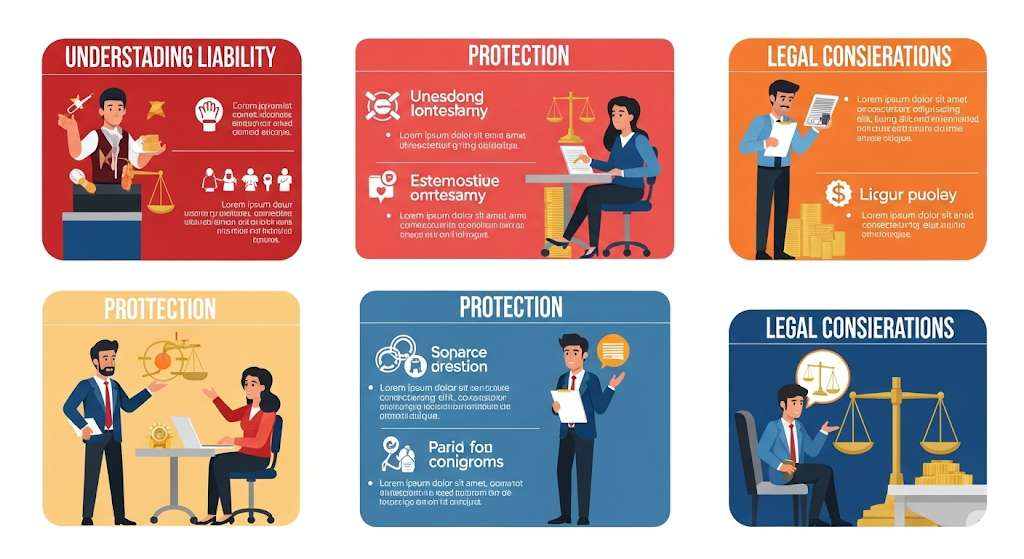
Debit card chip malfunctions can raise questions about responsibility, bank policies, and consumer rights. Understanding these areas helps protect users from financial loss and ensures timely resolution of any issues.
Your Responsibility in Reporting Issues
Cardholders must report a malfunctioning debit card chip promptly. The faster they notify their bank, the better their protection against unauthorized transactions. Under federal regulations, if the card is lost or stolen and used fraudulently, liability is limited to $50 if reported quickly.
Delayed reporting may increase liability. For example, failure to report within two days can raise the cardholder’s loss to $500 or more. Notably, card users cannot avoid liability if they willingly share PINs or ignore evident card misuse.
Timely communication with the bank is crucial. Keeping transaction records aids dispute resolution. Reporting also helps banks track recurring technical issues related to chip malfunctions.
Bank Policies on Malfunctioning Debit Cards
Banks typically offer replacements for debit cards with defective chips. Before issuing a new card, they might ask users to try simple fixes like cleaning the chip with 91%-99% alcohol to remove dirt or residue that can block the chip’s connection.
Most banks have a standard waiting period for replacements, often 5 to 10 business days. Some institutions provide expedited shipping for an extra fee.
Banks may also monitor accounts for suspicious activity during chip malfunction periods to protect customers against fraud. It’s important to review the bank’s liability limits and dispute process outlined in account agreements.
Certain policies limit bank liability if the user failed to report loss or malfunction promptly. However, many banks prioritize consumer protection through zero-liability fraud policies in practice.
Consumer Rights and Legal Protections
Federal laws like Regulation E protect debit card users. This law limits liability for unauthorized electronic fund transfers and mandates timely error resolution.
Cardholders don’t face unlimited debt if transactions are unauthorized, which contrasts with credit card debt laws such as statute of limitations rules. For example, the statute of limitations for credit card debt in Georgia is typically four years, but this does not apply to debit card fraud liability.
Credit card companies can pursue collections but cannot directly put a lien on a home without court action tied to a legal judgment. This distinction affects how consumers manage payment disputes on different cards.
Consumers have the right to request investigations into fraudulent or erroneous charges and to receive updates during the process. Keeping clear communication with the bank and maintaining evidence supports these legal protections.
Tips for Preventing Future Debit Card Issues
Maintaining a debit card’s chip requires regular care and attention. Identifying early signs of malfunction and knowing how to act quickly can reduce downtime and inconvenience.
Routine Card Maintenance
Regular cleaning of the chip can prevent dirt and grime buildup that causes read errors. Use a soft cloth dampened with 91% or 99% isopropyl alcohol to gently wipe the chip surface. Avoid using water or abrasive materials.
Storing the card in a protective sleeve or wallet prevents physical damage and exposure to magnets or extreme temperatures. Cards bent or scratched are more prone to chip failure, so handling with care is essential.
If the card shows signs of wear, it’s advisable to request a replacement before the chip stops working entirely. Routine checks and preventive steps minimize the chance of unexpected failures.
Recognizing Early Warning Signs
Users should pay attention to increased transaction errors or frequent “chip malfunction” messages at different terminals. Inconsistent functionality, such as working one day and not the next, can signal gradual chip degradation.
An inability to complete chip transactions where tap or swipe options won’t work is a strong indication to assess card condition. Early problems include difficulty inserting the card fully, loose fits, or visible chip damage.
Promptly recognizing these signs allows users to take preventive action before the chip completely fails, such as cleaning or contacting their bank for support.
What to Do If Problems Reoccur
If cleaning does not resolve chip issues, the next step is to contact the issuing bank for a replacement card. Many banks offer expedited delivery for malfunctioning cards.
Users should avoid forcing the card into readers or repeatedly attempting failed transactions to prevent further damage. It’s recommended to use contactless payment methods when available until a replacement arrives.
Documenting the time and place of malfunctions helps identify if the issue is with the card or the terminal. Consistent reoccurrence despite different terminals confirms a card fault requiring replacement.




